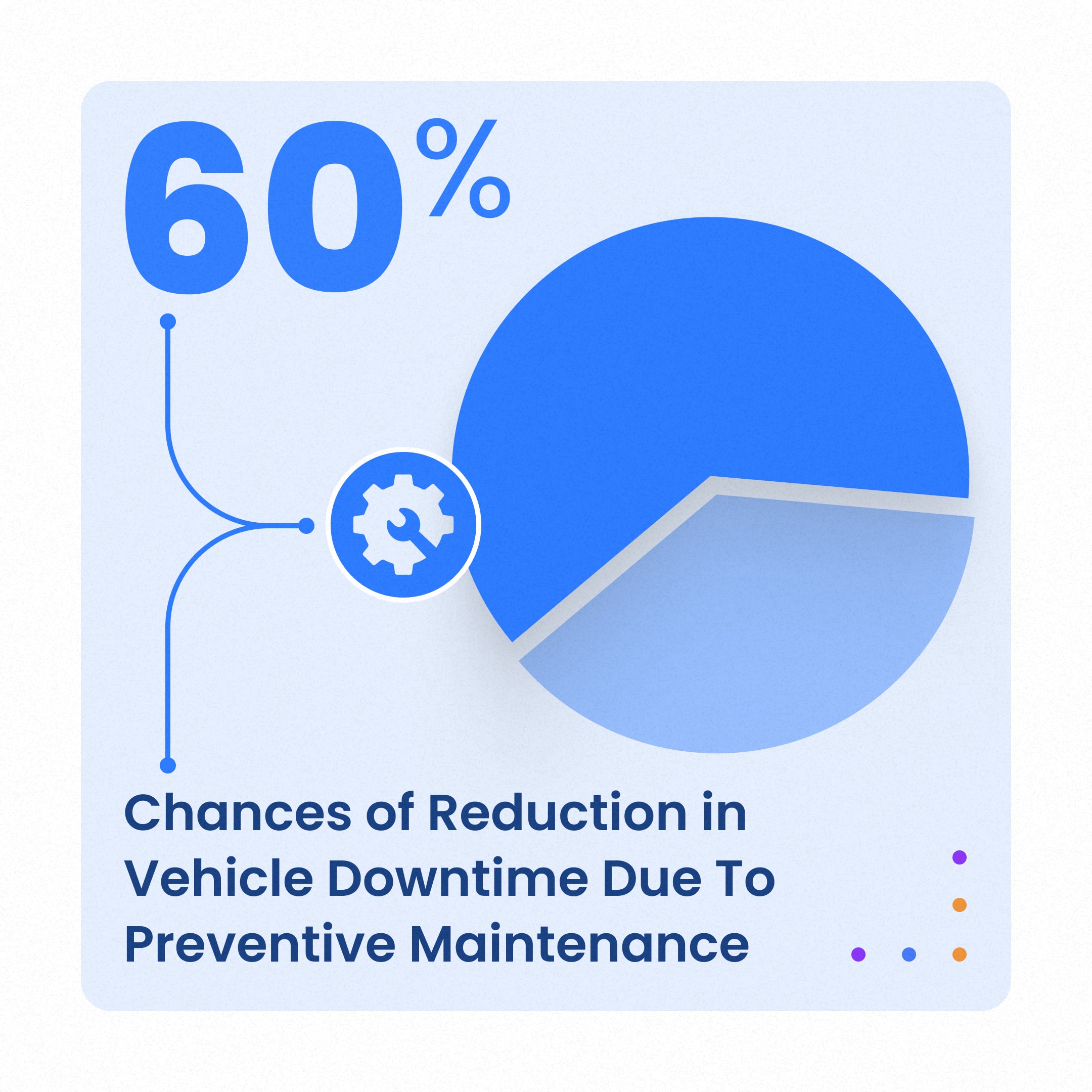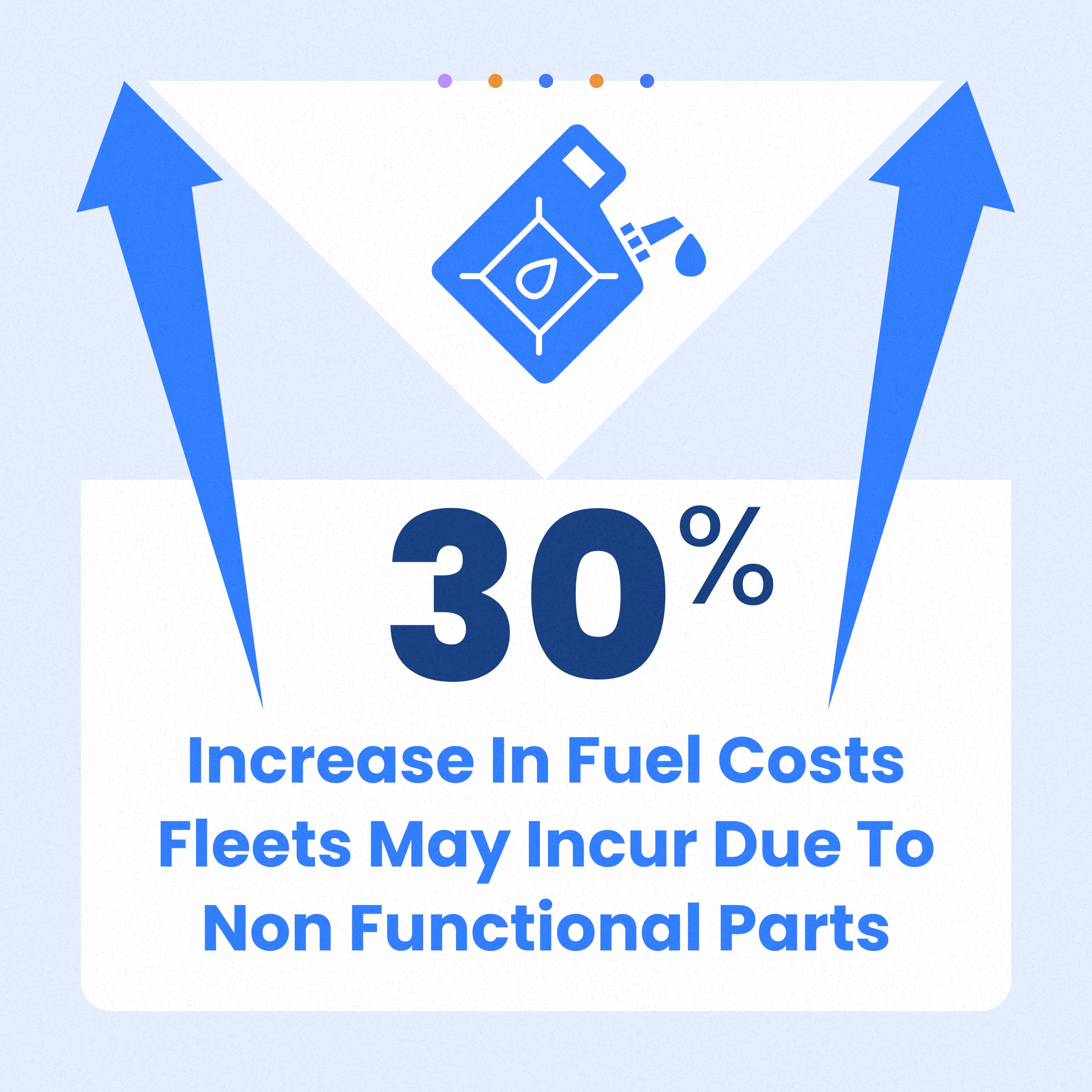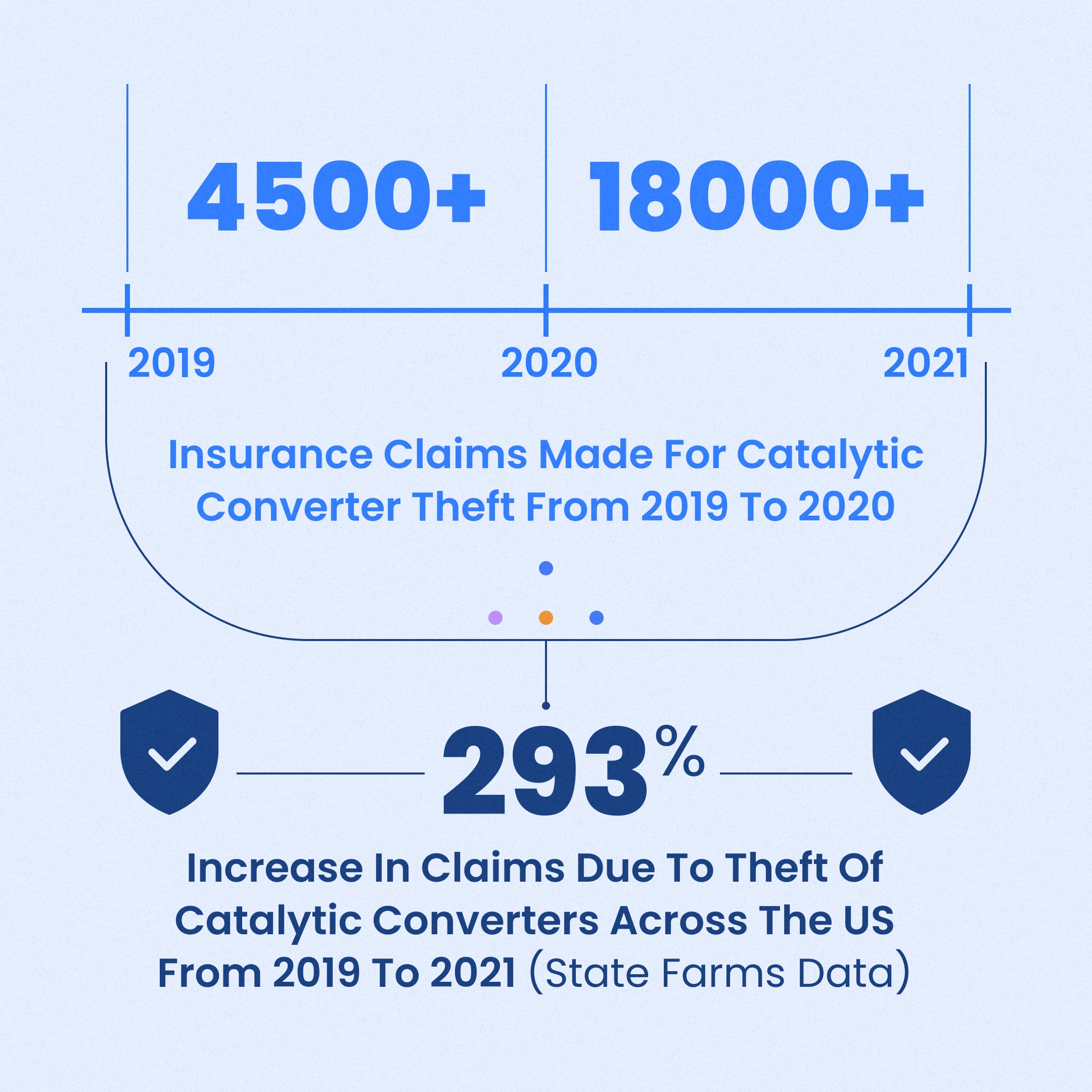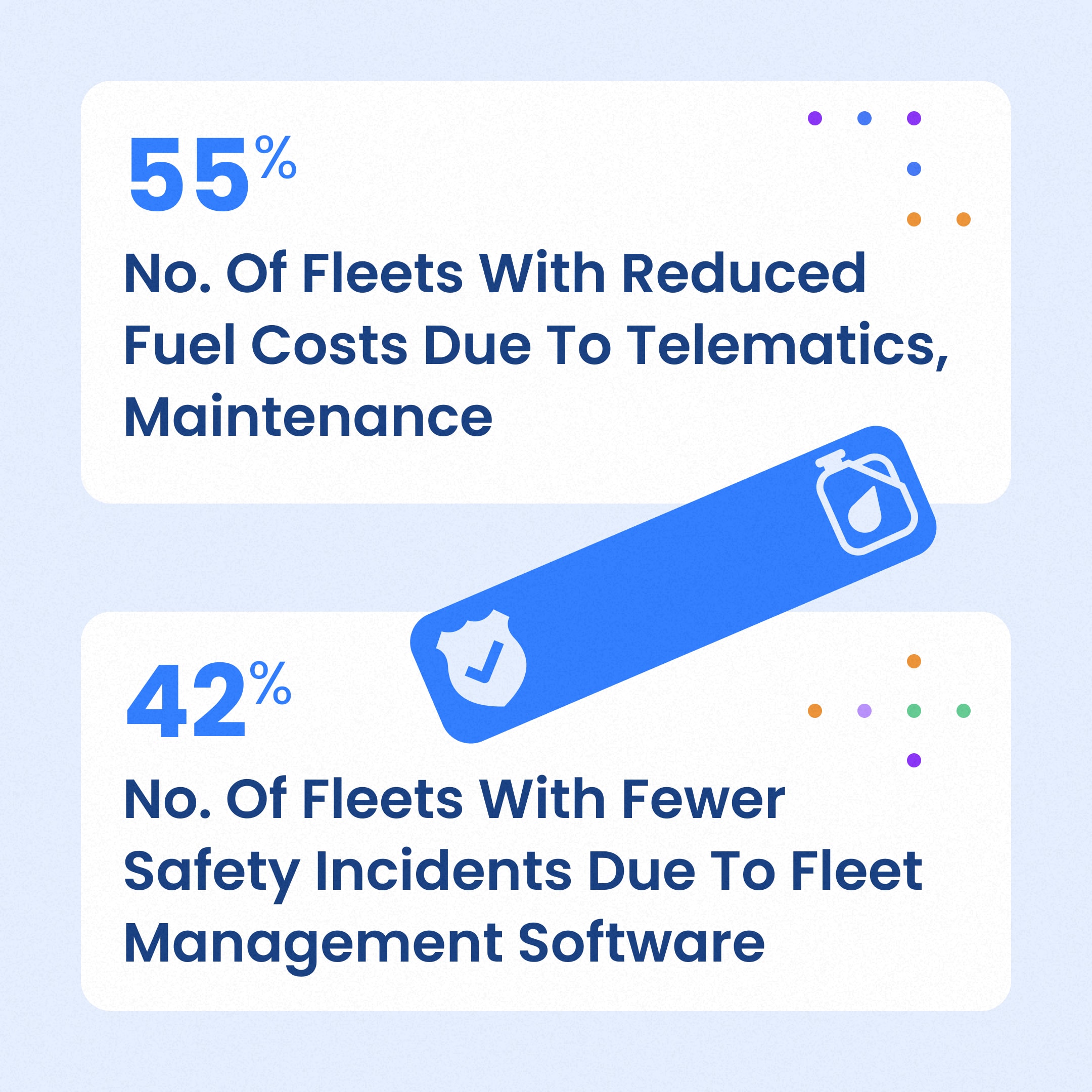If you are a fleet manager or a fleet owner, you’ve probably struggled one time too many trying to balance vehicle and fleet downtime. In the logistics and transportation sector, fleet companies’ biggest competitive advantage is operational efficiency. But thanks to events like road closures, accidents, vehicle breakdowns, or weather woes, it’s not always possible for fleets to operate exceptionally well. Fleet downtime is inevitable, and fleet managers or owners must consider this. One of the most effective ways you can control downtime costs is by leveraging the power of preventive maintenance. A well-scheduled and executed preventive maintenance program reduces vehicle downtime by up to 60%.

Why is preventive maintenance important to fleets?
Fleets are known to spend between $850 and $1,000 per day on each out-of-service vehicle, which can result in total downtime costs that are eight times higher than expected. As a fleet owner or manager, it’s crucial that you are in control of your vehicles at all times.
Preventive maintenance (or a PM program) dictates when your fleet’s vehicles must be serviced. This regular servicing allows maintenance crews to identify performance issues before they become problems, lowering the likelihood of downtime. Furthermore, scheduled vehicle maintenance downtime lets you plan and schedule repairs during off-hours or slow days. This can directly result in a more operational fleet with well-functioning assets.

What Elements Should an Ideal PM (preventive maintenance schedule plan) Have?
Regular inspection
You probably already have an inspection schedule for your fleet maintenance needs. A regular inspection schedule is a must in a PM (preventive maintenance) plan. This can allow fleet managers like you to keep track of the health of all your equipment and vehicles. You are more likely to miss out on possible problems without a proper inspection. In fact, you could incur up to a 30% increase in fuel costs due to non-functional parts.
Servicing
Vehicle and asset maintenance is critical to fleets and is usually a part of most PM plans. As fleet managers or fleet owners, you are probably already scheduling regular servicing in order to avoid premature asset wear and failure. Servicing assets and equipment, such as cleaning, lubricating, charging, and so on, should be undertaken and documented, as it is essential for a company to keep records of previous maintenance. This also mainly contributes to downtime but is an unavoidable aspect of fleet operations. Regular service allows maintenance personnel to determine exactly what type of servicing is required and when it is required, helping fleet companies stay operationally sound.
Calibration
As fleet managers and owners, you’ve probably always ensured that your equipment and vehicles are up to industry standards and go through quality checks seamlessly. As a part of active PM plans, you can consistently determine the value of an asset’s qualities on a routine basis. PM plans ensure that you compare existing assets to the expected standard provided by the manufacturer or experts. It entails comparing the two, one of which is a certified standard with known precision, to detect and correct any precision disparity between the asset being compared and the established certified standards. This ensures that your assets are always in working condition.
Apart from these three significant aspects, preventive maintenance or PM plans also usually ensure testing vehicles and equipment parts and working conditions, aligning parts according to changing industry standards, adjusting specific aspects in your vehicles to achieve optimal performance, and installing new parts as and when required.
Three Key Features of the Ideal Preventive Maintenance (PM) Program
You may already have a preventive maintenance program for your fleet. As a fleet manager or owner, though, you need to always have access to basic information about your fleet regarding maintenance and downtime. This allows you to save time, money, and resources, benefitting your business. Some features of an ideal PM program can help you achieve these results. These features include:
Automated Service Reminders
Fleet managers or fleet owners like you base their maintenance schedules on odometer (miles/kilometer) readings and changes. Tracking meter readings for all assets in your fleet is critical to ensuring that assets are serviced on time. However, fleet managers may receive infrequent and frequently incorrect odometer updates because many businesses still rely on manual systems. As a result, a mainstay of most strong PM (preventive maintenance) programs, an automated system that records meter readings and sends service reminders when needed, can help you keep track of your maintenance schedules and needs.
Integrated Service Programs
Preventive maintenance for different vehicles and assets requires different schedules and parts. An ideal PM program will allow you to integrate all your service schedules and access relevant information from one place so that you can seamlessly manage all your maintenance-related tasks as a fleet manager or fleet owner.
Accurate reporting
It is critical to have reliable data and to use the available data to track your program’s performance. Looking at past data on services performed can help prioritize major maintenance work for your fleet. An ideal PM program will help you view all your data in one place and allow you to access insights from dashboards and visualizations for easy reference.
In fact, the quickest and easiest way to achieve high ROI via your preventive maintenance program is to always be aware and in the know about maintenance-related updates. While most logistics companies and fleet businesses today use some form of transportation management system (TMS) to keep tabs on their assets, a fleet management and maintenance service can also benefit you greatly in achieving a higher ROI.
Why do you need a fleet management and maintenance system for preventive maintenance?
Fleet management and maintenance systems like Fleetpal can help you save precious dollars while ensuring that you optimize operational efficiency. With IoT and software capabilities, these systems allow you to keep track of your assets at all times and automate preventive maintenance. You can prevent accidents, equipment breakages, and more with a strong preventive maintenance program.
According to State Farms data, more than 4500 insurance claims were made for the theft of catalytic converters from 2019 To 2020, but by 2021, this number increased to more than 18000 claims, with an increase of 293%. With telematics and maintenance systems, these converters could be tracked and upgraded to avoid theft, helping trucking fleets save millions.

As a matter of fact, 55% of fleets managed to reduce fuel costs due to telematics and preventive maintenance, while 42% of fleets experienced fewer safety incidents by using fleet management software.
Fleetpal, simple software designed to track and solve every maintenance issue for fleet managers and owners, can help you with all your preventive maintenance needs. Fortunately, the benefits of a preventive maintenance program are no longer just a luxury for big national fleets anymore. Contact us today to learn how our Fleetpal maintenance management software helps fleet managers, maintenance managers, and suppliers collaborate.


